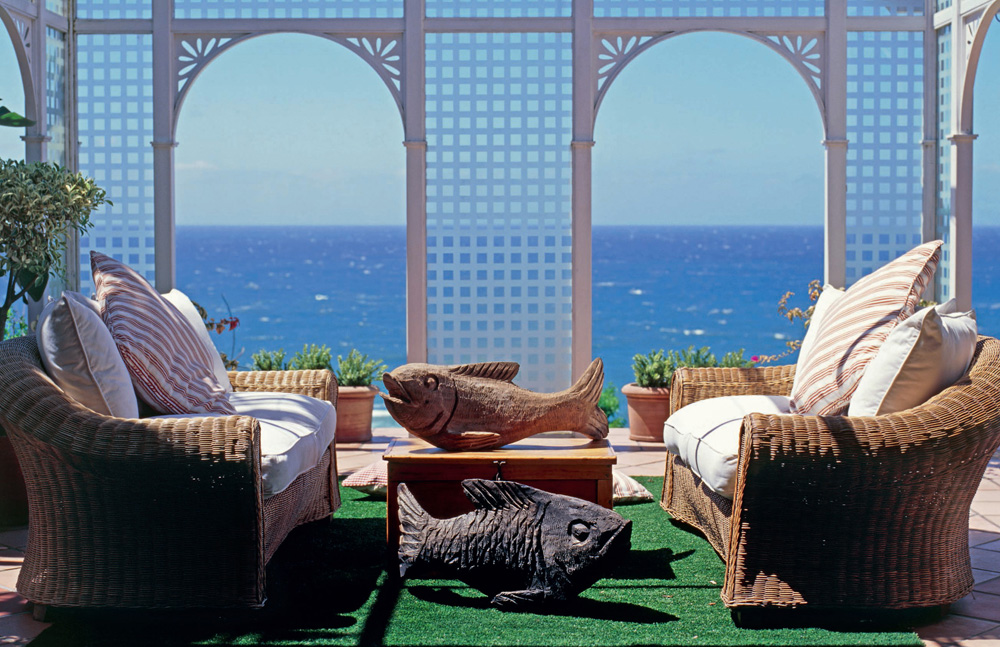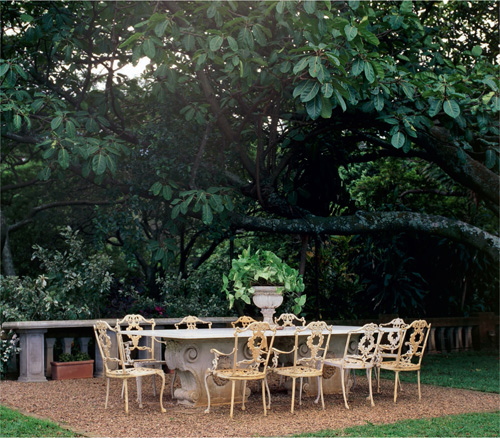Lush tropical paradise
Tim and Nick Hancock, the owners of this property high up on Durban’s Bluff, have lived here for over 50 years. It is one of the original homes in the area and has a commanding view of the Indian Ocean.
Of their three-hectare mostly indigenous garden with acres of dune forest leading down to the sea, Tim comments: ‘Initially the garden was very bare, except for a lot of roses, some exotic trees and a few large indigenous figs. We felled some 40 Norfolk pines, then, presuming that nothing would grow so close to the sea and in this particularly hot and humid part of Durban, we just bumbled along, instructing the plants that they just had to look after themselves, which they did!
‘Most of the new planting comes out of the existing garden. With Durban’s climate, things grow very quickly. We have to divide and cut back severely every year and if there is a gap, we have more than enough with which to fill it.
‘Many of the exotic plants began as indoor plants, such as the crotons, acalyphas, draceana and the giant umbrella tree, and were transplanted to the garden when they had done their bit in the house, sometimes trebling in size.’
‘Every year the local garden club nags me to enter their competition … I win simply because mine is the only large garden in the ‘‘big garden’’ category.’
TIM HANCOCK






